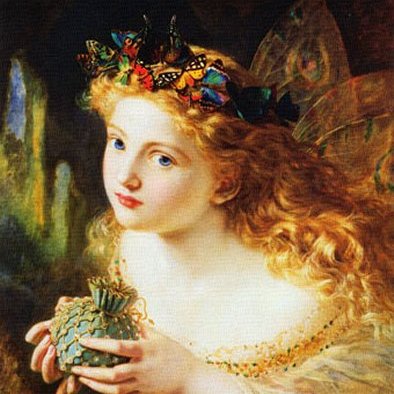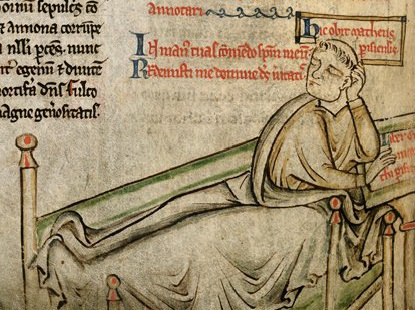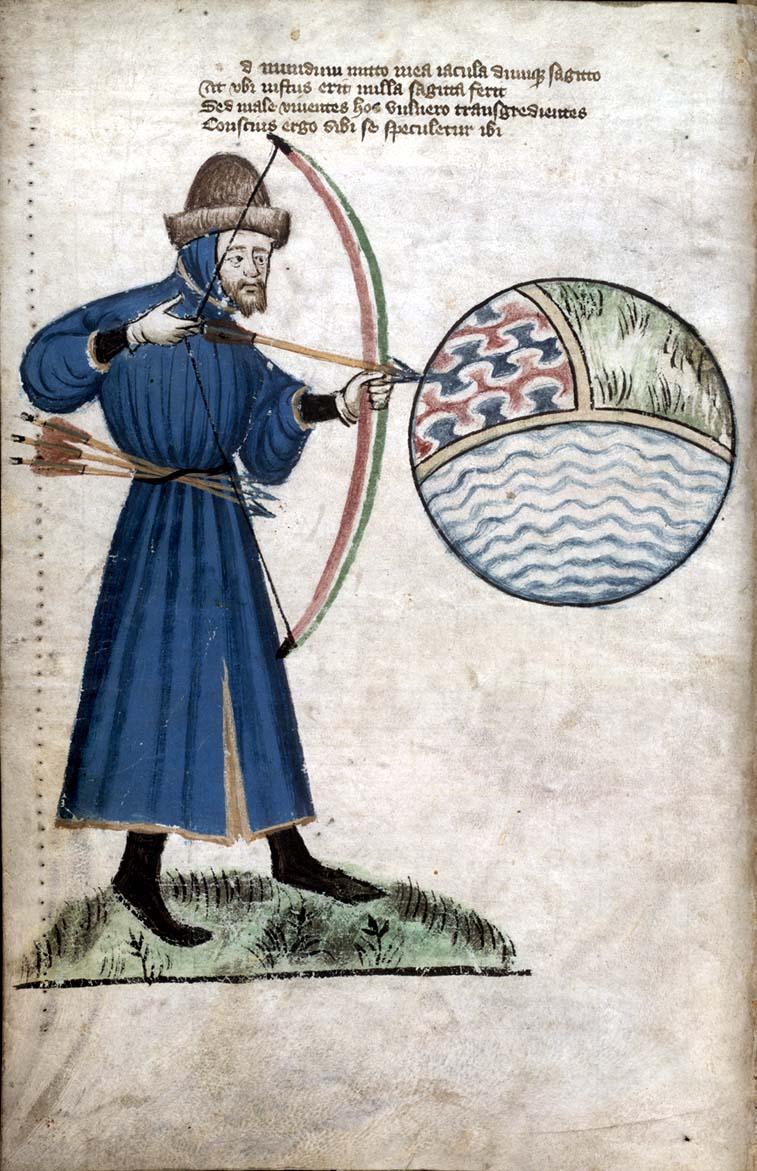|
Emaré
''Emaré'' is a Middle English Breton lai, a form of mediaeval romance poem, told in 1035 lines. The author of ''Emaré'' is unknown and it exists in only one manuscript, Cotton Caligula A. ii, which contains ten metrical narratives. ''Emaré'' seems to date from the late fourteenth century, possibly written in the North East Midlands. The iambic pattern is rather rough.Emaré: Introduction', Edited by Anne Laskaya and Eve Salisbury, Originally Published in The Middle English Breton Lays, Kalamazoo, Michigan: Medieval Institute Publications, 1995 It tells a version of the popular "Constance-saga". Plot summary The text begins with a standard invocation to Christ, but one of uncommon length; it may be the longest one in English romance. We are then told of Sir Artyus, an Emperor. His wife gives birth to a beautiful baby girl but dies shortly afterwards. The daughter, Emaré, is sent to live with a lady named Abro who raises her and teaches her manners and sewing. Some years la ... [...More Info...] [...Related Items...] OR: [Wikipedia] [Google] [Baidu] |
Allerleirauh
"Allerleirauh" ( en, "All-Kinds-of-Fur", sometimes translated as "Thousandfurs") is a fairy tale recorded by the Brothers Grimm. Since the second edition published in 1819, it has been recorded as Tale no. 65. Andrew Lang included it in '' The Green Fairy Book''. It is Aarne–Thompson folktale type 510B, unnatural love. Others of this type include " Cap O' Rushes", " Donkeyskin", " Catskin", " Little Cat Skin", " The King who Wished to Marry His Daughter", " The She-Bear", " Mossycoat", " Tattercoats", " The Princess That Wore A Rabbit-Skin Dress", " Katie Woodencloak", " The Bear" and " The Princess in the Suit of Leather". Indeed, some English translators of "Allerleirauh" titled that story "Catskin" despite the differences between the German and English tales. Synopsis A king promised his dying wife that he would not re-marry unless it was to a woman who was as beautiful as she was, and when he looked for a new wife, he realized that the only woman that could match her bea ... [...More Info...] [...Related Items...] OR: [Wikipedia] [Google] [Baidu] |
Breton Lai
A Breton lai, also known as a narrative lay or simply a lay, is a form of medieval French and English romance literature. Lais are short (typically 600–1000 lines), rhymed tales of love and chivalry, often involving supernatural and fairy-world Celtic motifs. The word "lay" or "lai" is thought to be derived from the Old High German and/or Old Middle German ''leich'', which means play, melody, or song, or as suggested by Jack Zipes in ''The Oxford Companion to Fairy Tales'', the Irish word ''laid'' (song).Zipes, 62 Zipes writes that Arthurian legends may have been brought from Wales, Cornwall and Ireland to Brittany; on the continent the songs were performed in various places by harpists, minstrels, storytellers.Zipes, Jack, ''The Oxford Companion to Fairytales''. Oxford UP. 2009 62-63 Zipes reports the earliest recorded lay is Robert Biker's Lai du Cor, dating to the mid- to late-12th century. The earliest of the Breton lais to survive is probably ''The Lais of Marie de Fra ... [...More Info...] [...Related Items...] OR: [Wikipedia] [Google] [Baidu] |
Romance (heroic Literature)
As a literary genre, the chivalric romance is a type of prose and verse narrative that was popular in the noble courts of High Medieval and Early Modern Europe. They were fantastic stories about marvel-filled adventures, often of a chivalric knight-errant portrayed as having heroic qualities, who goes on a quest. It developed further from the epics as time went on; in particular, "the emphasis on love and courtly manners distinguishes it from the ''chanson de geste'' and other kinds of epic, in which masculine military heroism predominates." Popular literature also drew on themes of romance, but with ironic, satiric, or burlesque intent. Romances reworked legends, fairy tales, and history to suit the readers' and hearers' tastes, but by c. 1600 they were out of fashion, and Miguel de Cervantes famously burlesqued them in his novel ''Don Quixote''. Still, the modern image of "medieval" is more influenced by the romance than by any other medieval genre, and the word ''me ... [...More Info...] [...Related Items...] OR: [Wikipedia] [Google] [Baidu] |
The Man Of Law's Tale
"The Man of Law's Tale" is the fifth of the '' Canterbury Tales'' by Geoffrey Chaucer, written around 1387. John Gower's "Tale of Constance" in '' Confessio Amantis'' tells the same story and may have been a source for Chaucer. Nicholas Trivet's ''Les chronicles'' was a source for both authors. Wurtele provides a detailed compilation of the differences between Trivet's Chronicle and the poems of Gower and Chaucer. Gower strove for vividness and shortened the tale in places. Chaucer expanded the tale and emphasizes the holiness of Constance and how she was favoured by heaven. Hagiographic motifs are most abundant in Chaucer's version, e.g. “the miracles God works though Custance and the way she is miraculously fed while at sea”. 2Wurtele observes that Chaucer makes frequent use of the adjective "hooly" but Gower never uses this word. Synopsis (References here are to line numbers in both Man of Law's Tale (MLT) and Confessio Amantis (CA).) Constance (Custance in Chaucer) ... [...More Info...] [...Related Items...] OR: [Wikipedia] [Google] [Baidu] |
Vitae Duorum Offarum
The '' Vitae duorum Offarum'' "The lives of the two Offas" is a literary history written in the mid-thirteenth century, apparently by the St Albans monk Matthew Paris; however, the most recent editor and translator of the work rejects this attribution and argues for an earlier date, in the late twelfth century. The earliest editor, William Wats, argues that the texts are older than Matthew's day but were revised by him; he bases this view on stylistic elements, such as the inclusion in the first ''Vita'' of a quotation from Lucan (''Pharsalia'' I. 92–3) which also appears repeatedly in Matthew's ''Chronica maiora''. Account The text concerns two kings, King Offa of the Angles, a fourth or fifth-century ancestor figure of the Mercians, and King Offa of Mercia (r. 757-796), through whose lives the text recounts the foundation of St Alban's Abbey: Offa of Angel made the vow to found a monastery, while several centuries later, his namesake Offa of Mercia executed this plan on disco ... [...More Info...] [...Related Items...] OR: [Wikipedia] [Google] [Baidu] |
The Girl Without Hands
"The Girl Without Hands" or "The helpless Maiden" or "The Armless Maiden" (german: Das Mädchen ohne Hände) is a German fairy tale collected by the Brothers Grimm. It is tale number 31 and was first published in the 1812 edition of '' Children's and Household Tales''. The story was revised by the Grimm brothers over the years, and the final version was published in the 7th edition of Children's and Household Tales in 1857. It is Aarne-Thompson type 706.Heidi Anne Heiner"Tales Similar to the Girl Without Hands" Story elements Throughout different variations, the story takes place in four sections.Ashley, Melissa"'And Then the Devil Will Take Me Away': Adaptation, Evolution, and The Brothers Grimm's Suppression of Taboo Motifs in 'The Girl without Hands'."''Double Dialogues'', 15 December 2010. The Mutilated Heroine: A strange man approaches a miller and offers him riches in exchange for whatever he found standing behind the mill. Believing that it was only an apple tree, and ... [...More Info...] [...Related Items...] OR: [Wikipedia] [Google] [Baidu] |
Chivalric Romance
As a literary genre, the chivalric romance is a type of prose and verse narrative that was popular in the noble courts of High Medieval and Early Modern Europe. They were fantastic stories about marvel-filled adventures, often of a chivalric knight-errant portrayed as having heroic qualities, who goes on a quest. It developed further from the epics as time went on; in particular, "the emphasis on love and courtly manners distinguishes it from the '' chanson de geste'' and other kinds of epic, in which masculine military heroism predominates." Popular literature also drew on themes of romance, but with ironic, satiric, or burlesque intent. Romances reworked legends, fairy tales, and history to suit the readers' and hearers' tastes, but by c. 1600 they were out of fashion, and Miguel de Cervantes famously burlesqued them in his novel '' Don Quixote''. Still, the modern image of "medieval" is more influenced by the romance than by any other medieval genre, and the word ... [...More Info...] [...Related Items...] OR: [Wikipedia] [Google] [Baidu] |
The Wife's Lament
"The Wife's Lament" or "The Wife's Complaint" is an Old English poem of 53 lines found on folio 115 of the Exeter Book and generally treated as an elegy in the manner of the German '' frauenlied'', or "women's song". The poem has been relatively well preserved and requires few if any emendations to enable an initial reading. Thematically, the poem is primarily concerned with the evocation of the grief of the female speaker and with the representation of her state of despair. The tribulations she suffers leading to her state of lamentation, however, are cryptically described and have been subject to many interpretations. Indeed, Professor Stephen Ramsay has said, "the 'correct' interpretation of "The Wife's Lament" is one of the more hotly debated subjects in medieval studies." Genre Though the description of the text as a woman's song or ''frauenlied''—lamenting for a lost or absent lover—is the dominant understanding of the poem, the text has nevertheless been subject to a v ... [...More Info...] [...Related Items...] OR: [Wikipedia] [Google] [Baidu] |
Cotton Caligula
This is an incomplete list of some of the manuscripts from the Cotton library that today form the Cotton collection of the British Library. Some manuscripts were destroyed or damaged in a fire at Ashburnham House in 1731, and a few are kept in other libraries and collections. Robert Bruce Cotton organized his library in a room long by six feet wide filled with bookpresses, each with the bust of a figure from classical antiquity on top. Counterclockwise, these were Julius Caesar, Augustus, Cleopatra, Faustina, Tiberius, Caligula, Claudius, Nero, Galba, Otho, Vitellius, Vespasian, Titus, and Domitian. (Domitian had only one shelf, perhaps because it was over the door). In each press, each shelf was assigned a letter; manuscripts were identified by the bust over the press, the shelf letter, and the position of the manuscript (in Roman numerals) counting from the left side of the shelf. Thus, the Lindisfarne Gospels, Nero B.iv, was the fourth manuscript from the left on the second ... [...More Info...] [...Related Items...] OR: [Wikipedia] [Google] [Baidu] |
The She-bear
"The She-bear" is an Italian literary fairy tale, written by Giambattista Basile in his 1634 work, the ''Pentamerone''. Ruth Manning-Sanders included it in ''A Book of Princes and Princesses''. It is Aarne-Thompson classification system folktale type 510B, unnatural love. Others of this type include ''Cap O' Rushes'', ''Catskin'', ''Allerleirauh'', '' The King who Wished to Marry His Daughter'', ''Donkeyskin'', ''Little Cat Skin'', ''Mossycoat'', '' The Princess That Wore A Rabbit-Skin Dress'', and '' The Bear''. Henriette-Julie de Murat used a similar transformation in ''Bearskin'', for the heroine to escape not her father but an ogre husband. Synopsis A dying queen required her husband to promise to remarry only if the new bride was as beautiful as she was. Because he had only a daughter, soon after her death, he decided to remarry. He holds a contest and summons women from different countries but he does not want to choose any of them as his wife. After long inspection ... [...More Info...] [...Related Items...] OR: [Wikipedia] [Google] [Baidu] |
Confessio Amantis
''Confessio Amantis'' ("The Lover's Confession") is a 33,000-line Middle English poem by John Gower, which uses the confession made by an ageing lover to the chaplain of Venus as a frame story for a collection of shorter narrative poems. According to its prologue, it was composed at the request of Richard II. It stands with the works of Chaucer, Langland, and the Pearl poet as one of the great works of late 14th-century English literature. The Index of Middle English Verse shows that in the era before the printing press it was one of the most-often copied manuscripts (59 copies) along with ''Canterbury Tales'' (72 copies) and '' Piers Plowman'' (63 copies). In genre it is usually considered a poem of consolation, a medieval form inspired by Boethius' '' Consolation of Philosophy'' and typified by works such as ''Pearl''. Despite this, it is more usually studied alongside other tale collections with similar structures, such as the ''Decameron'' of Boccaccio, and particularly Cha ... [...More Info...] [...Related Items...] OR: [Wikipedia] [Google] [Baidu] |
John Gower
John Gower (; c. 1330 – October 1408) was an English poet, a contemporary of William Langland and the Pearl Poet, and a personal friend of Geoffrey Chaucer. He is remembered primarily for three major works, the ''Mirour de l'Omme'', '' Vox Clamantis'', and '' Confessio Amantis'', three long poems written in French, Latin, and English respectively, which are united by common moral and political themes. Life Few details are known of Gower's early life. He was probably born into a family which held properties in Kent and Suffolk.Lee, Sidney (1890). " Gower, John". In ''Dictionary of National Biography''. 22. London. pp. 299-304. Stanley and Smith use a linguistic argument to conclude that "Gower’s formative years were spent partly in Kent and partly in Suffolk". Southern and Nicolas conclude that the Gower family of Kent and Suffolk cannot be related to the Yorkshire Gowers because their coats of arms are drastically different. Macaulay and other critics have observed th ... [...More Info...] [...Related Items...] OR: [Wikipedia] [Google] [Baidu] |

.jpg)



_plate15.jpg)
